Governmental coddling and support are not necessarily an advantage. China’s state-owned companies are falling behind modern, private competitors such as BYD and Xpeng when it comes to electromobility. One of the reasons: They may have benefited from the forced knowledge transfer of joint ventures with Western brands in the decades from 1980 to 2020 – but this knowledge is now losing value as new drive systems are emerging.
Chinese state-owned companies such as FAW and Changan are not flexible enough to bring their technology and business model up to speed, as Christian Domke Seidel analyzes. However, from a German perspective, it is somewhat disconcerting that Chinese state-owned companies have the same problems with the transformation and competition from BYD as German car manufacturers.
Meanwhile, Canada wants to keep good and affordable EVs from top brands such as BYD out of its market as much as possible; the reasoning is once again cheap export of excess capacity. By introducing high tariffs, Ottawa follows other major markets, such as the USA and the EU.
One can’t help but wonder: Where else should the Chinese goods go? Again, fast, agile brands such as BYD and Xpeng have a solution to the trade problems: They quickly build plants in Europe to circumvent tariffs by producing locally.

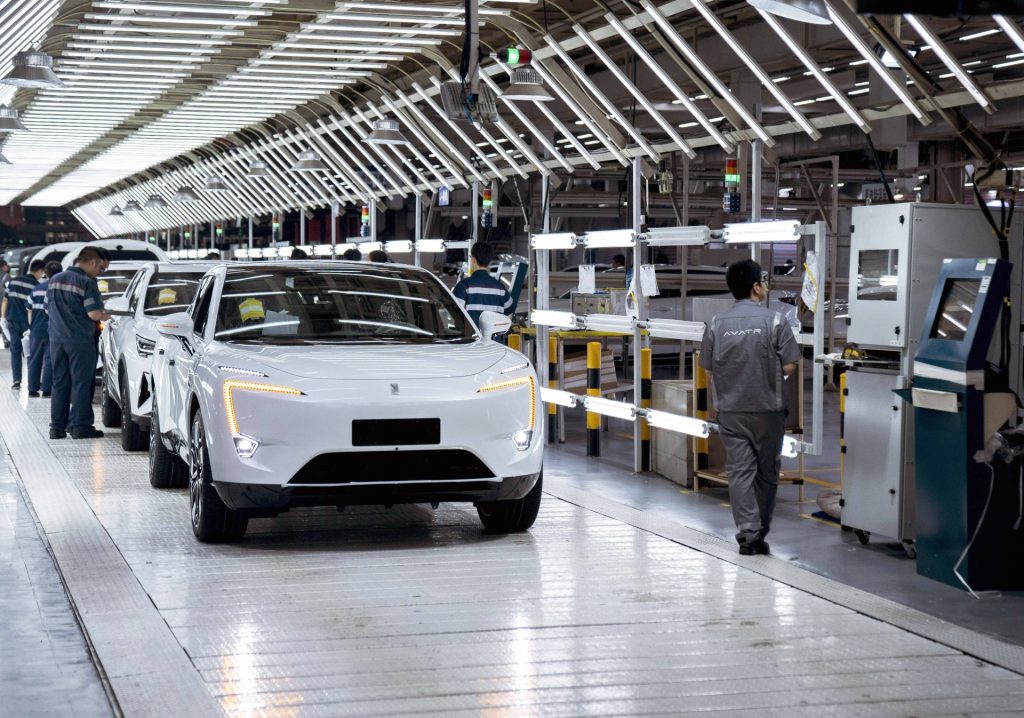
China’s major state-owned automotive companies – Changan Automobile, FAW Group and Dongfeng Motor – have lost touch with electromobility. This is mainly due to their lack of investment opportunities and risk aversion. New government assessment criteria are intended to help these companies raise the necessary money for research and development. However, the impact on the already oversaturated market is entirely unclear.
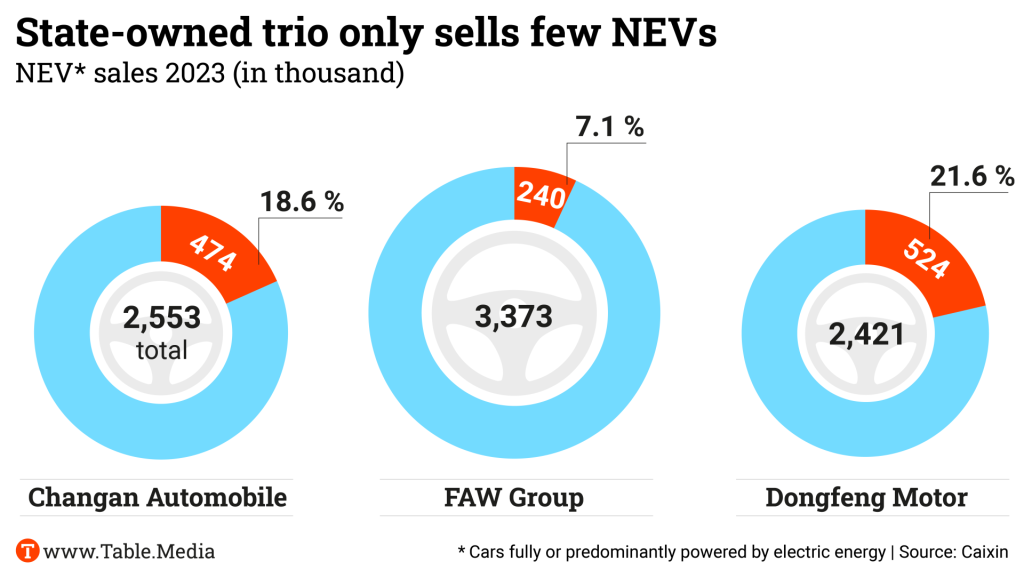
Just under one in three cars (31.6 percent) sold in China in 2023 was an electric car, plug-in hybrid or other New Energy Vehicle (NEV). And the trend is rising: By July 2024, it was already half. However, the three large state-owned companies are nowhere near this.
However, Dongfeng only appears to be doing well here: The comparatively high share is also because the car manufacturer’s total sales slumped by 17 percent last year.
According to experts, state-owned companies face the same obstacles as European, Japanese, and American car manufacturers. “The established state-owned companies have been producing combustion cars for decades,” says Jacob Gunter, Senior Analyst at the Mercator Institute for China Studies (Merics). Switching to electric vehicles means changing their business model, and this requires a company to invest heavily and take many risks.”
In other words, many Chinese state-owned companies have the same problems with the transition as German car manufacturers. A handful of highly dynamic domestic avant-gardists, such as BYD, tend to be the ones who are currently shaping the super-advanced image of the Chinese car industry. State-owned companies are not faring any better than the Germans.
This is because Chinese state-owned companies cannot invest anywhere near the same extent as private companies. This is because the State-Owned Assets Supervision and Administration Commission (SASAC), which is responsible for central state-owned enterprises, evaluates their investments, assesses the risks and sets the spending limits. SASAC has now expanded the criteria for this.
“The adjustments to the evaluation are aimed at removing the obstacles,” Zhang Yuzhuo, Chairman of SASAC, told Caixin Global. The new criteria are to enable state-owned companies to focus more on market share and the development of new technologies and less on sales and margins. However, the details are still lacking.
However, there are more reasons why state-owned companies do not play the leading role in electromobility. The former joint venture obligation for foreign manufacturers in China has allowed domestic companies to siphon off knowledge – but not in the electric segment. The progress Chinese manufacturers have made through these partnerships has tended to be of a short and medium-term nature. Foreign car brands have also focused on combustion engines for a very long time.
According to Gunter, China’s state-owned companies have also been given entirely different goals besides car manufacturing. “The large state-owned companies are in the Danwei system. This means that they also have to serve social and political goals. First and foremost, they must guarantee employment, pay good salaries, provide housing and healthcare.” This also slows down the companies and leaves less money for research and development.
The Communist Party requires that one of the three centralized state-owned companies Changan, FAW and Dongfeng sell at least one million NEVs by 2025. This prompted Dongfeng to launch a price offensive just days after the new regulations were enacted. Firstly, customers can trade in their used car for an NEV at a substantial discount. Secondly, current car models are being offered at high discounts. Changan focuses on its three NEV brands Avatr, Deepal and Nevon in order to reach the million target and has also partnered with Huawei. The equally huge state-owned company and VW partner Shanghai Automotive (SAIC) is not part of the aforementioned group, as SAIC is under the control of the Shanghai local government and not SASAC.
In any case, the consequences of these investments made by the three companies are not yet foreseeable. The market has been consolidating for years. Hundreds of EV companies have been reduced to dozens through bankruptcies and takeovers. However, the Chinese car market continues to be dominated by overcapacity and price wars. There are still many state-owned car manufacturers, as Gunter says. Many local governments have founded their own brands and subsidized them massively to maintain quality jobs. Anyone traveling through China can see how police and taxi car brands change from region to region. Many of them are unknown outside the respective government zone.
Local governments hope to be able to subsidize their car brand until the market is less competitive. However, there is reason to doubt that the Communist Party tolerates this practice much longer. Gunter’s assessment: “Beijing has not yet decided how to react to the overcapacity and the large number of manufacturers because the issue is not yet a priority. But they will have to solve the dilemma.”
Gunter emphasizes that state-owned companies always have the advantage when switching to electromobility. “It is easier for them to switch to electric cars because the government can simply mandate this strategy, permitting lower margins or losses.”
Private Chinese car manufacturers already work with tiny margins. Gunter calculates that market leader BYD earns between 1,000 and 1,500 euros on each vehicle. Despite the shipping costs, this figure is seven to ten times higher in Europe, and the effects of the EU’s extra tariffs have not yet been factored in. Nevertheless, Gunter is convinced: “If the price pressure from state-owned companies increases, private companies will increasingly go abroad because the margins are better there.” BYD and others also want to produce overseas, and SAIC has also set its sights on Europe.
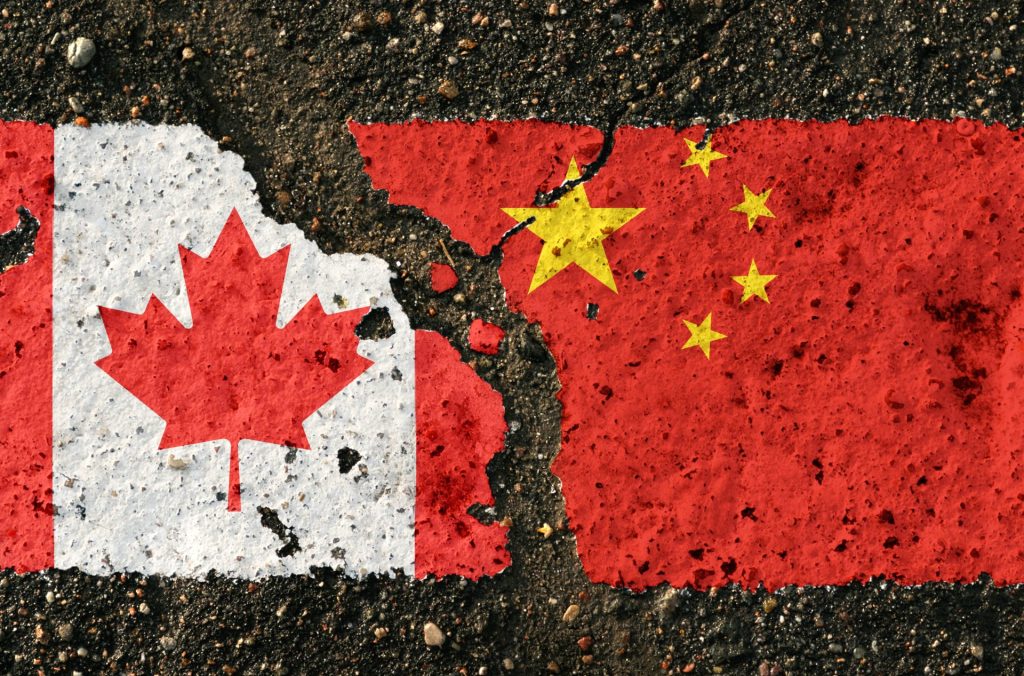
After the United States, Canada has now doubled the import prices of Chinese EVs. Prime Minister Justin Trudeau justified the move on the grounds that China was deliberately exporting cheap products from overcapacity in the country’s factories. The step is part of a global trend to keep Chinese imports out. This, in turn, forces Chinese companies to relocate investments from their domestic market to the target markets.
As expected, the Chinese government reacted angrily on Wednesday and threatened consequences. The embassy in Ottawa called the move “protectionist,” adding that it violated World Trade Organisation (WTO) rules and undermined trade cooperation between the two countries.
The decision was triggered at a cabinet meeting, which US security adviser Jake Sullivan reportedly also attended: The import of Chinese EVs to Canada has increased almost fivefold within a year. However, most of the attention initially fell on Tesla. After all, the tariffs also affect cars from the US brand that are manufactured in Shanghai and thus run counter to company founder Elon Musk’s strategy of manufacturing cars at a large local plant at a Chinese cost and selling them worldwide.
A Canadian government spokesperson openly told the news agency Reuters that Tesla should supply the Canadian market from North America – in other words, from the USA. This would mean no tariffs. The goal is clear: Sales should serve the regional labor market; Canada doesn’t want to become the bargain bin for the enormous capacities of the Chinese economy.
China’s trade surplus rose to a record high of 99 billion US dollars in June, making all other economies nervous at the moment. After all, one person’s surplus is another’s deficit. China’s export success can be attributed to low prices thanks to high subsidies.
With 1.6 million cars sold in 2023, Canada is a significant car market. However, it is significantly smaller than, for example, the German market with 2.8 million vehicles sold. More importantly, the Canadian move is part of a global trend. As is well known, the EU is also imposing tariffs on Chinese EVs from October, and many other economies are closing their doors. Not just for cars: Indonesia slaps tariffs of up to 200 percent on textiles from China, and Malaysia cracks down on direct imports through shopping platforms.
Compared to the flat-rate tariffs of 100 percent imposed by the USA and Canada, the EU tariffs have a differentiated effect. They range between 17 and 36.3 percent and were calculated according to an analysis of the subsidies granted to individual manufacturers. This makes the EU’s tariffs much less political than the North American ones. Nevertheless, China also accuses Brussels of arbitrariness. The state media accuse the EU of blindly following the USA into a trade conflict.
Despite Chinese opposition, the tariffs are already having an effect. And they are heading right where the EU wants them to. As Xpeng CEO He Xiaopeng told Bloomberg, the EV manufacturer is considering building a plant and data centers in Europe.
Other Chinese brands are pursuing similar plans. BYD is building a factory in Hungary, Geely is moving to Slovakia and Chery is already producing in Spain. China’s investments in factories in the European economic area are thus growing substantially.
Local production helps avoid import duties, which is why Toyota started to set up plants in the USA and Europe in the early 1980s. As Japanese companies established themselves as domestic manufacturers, they no longer faced any reservations. Today, they are considered good employers.
Turkey successfully pulled off a different maneuver: Ankara first announced high tariffs on Chinese electric cars but withdrew the plan after BYD announced a large investment in the country.
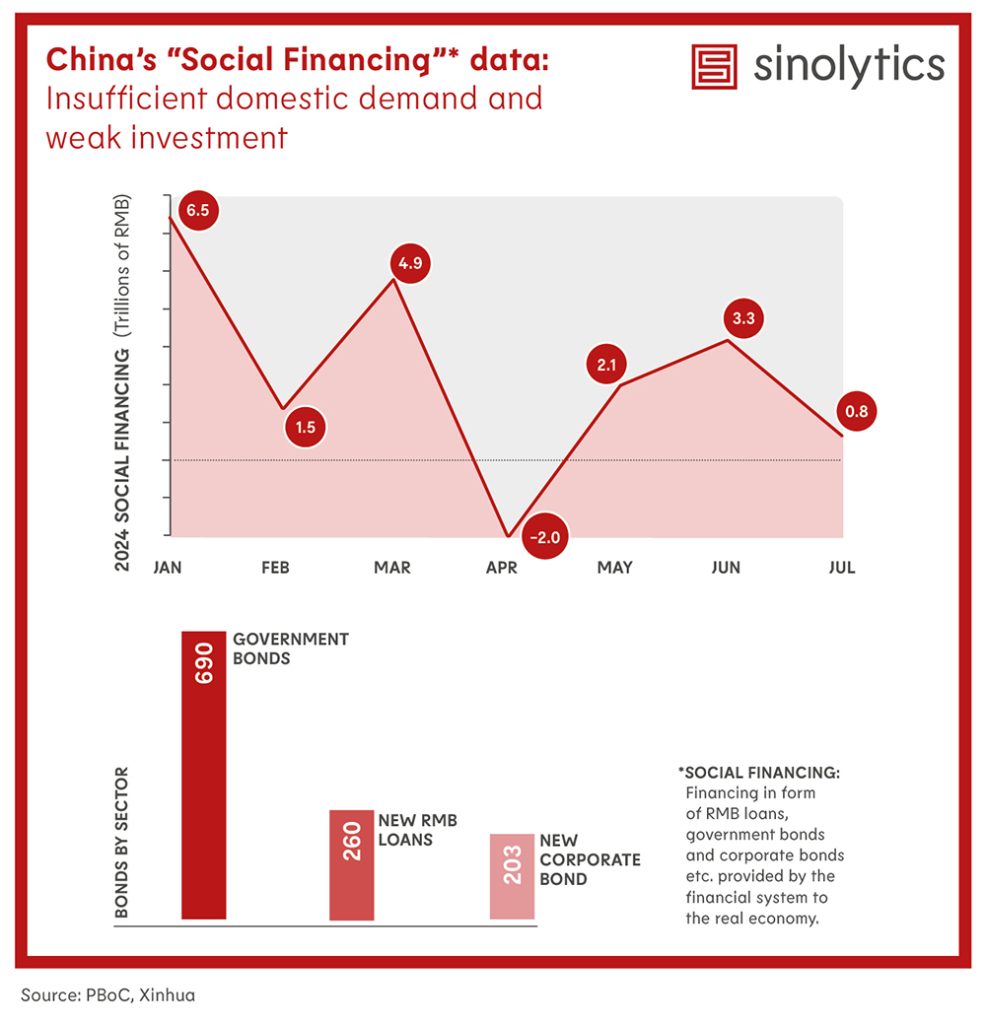
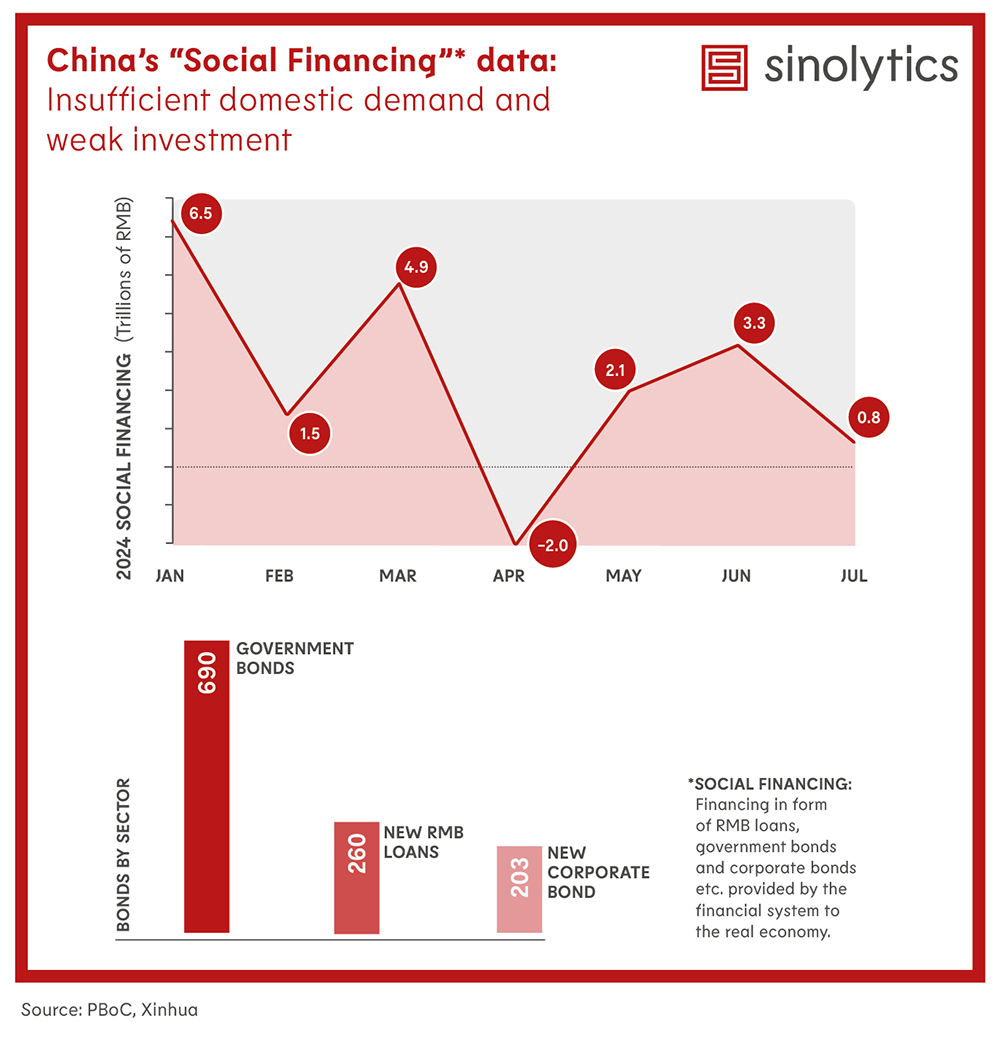
Sinolytics is a research-based business consultancy entirely focused on China. It advises European companies on their strategic orientation and specific business activities in the People’s Republic.
Chinese Foreign Minister Wang Yi and US National Security Advisor Jake Sullivan met behind closed doors on Tuesday, according to a report by Chinese state broadcaster CCTV. The aim of the meeting was to maintain a “channel of strategic communication” in order to stabilize relations in the face of growing tensions between the two countries, CCTV further reported.
Before the meeting near Beijing, Wang described bilateral relations as important to the world and said they had undergone “twists and turns.” The two sides will hold in-depth talks in the coming days to “overcome disruptions and remove obstacles” to the sustainable development of bilateral relations.
Sullivan, who is on a three-day visit to China, was quoted as saying that US President Joe Biden is committed to managing relations with China responsibly, preventing competition from turning into conflict and cooperating in areas of mutual interest. In addition to sounding out a possible last summit between Biden and Chinese President Xi Jinping, the meeting is expected to discuss previous agreements between the two sides, such as on military communications, cooperation in the fight against drugs and dialogue on artificial intelligence. cyb
China would like to see broader support worldwide for its Ukraine peace plan. As reported by AP news agency, China’s special envoy to Ukraine, Li Hui, emphasized after talks with Indonesia, Brazil, and South Africa that they were all important forces in promoting world peace. He said they had maintained communication with both Ukraine and Russia and were committed to a political solution to the conflict through dialogue and negotiations.
China also sees itself in this camp. In February 2023, Beijing presented a twelve-point plan which, among other things, calls for a political resolution to the “Ukraine crisis” and the preservation of the legitimate security interests of all states. The plan makes no mention of military aggression by Russia and was rejected by the West. According to the AP report, Li, in turn, criticized Western support for Ukraine: “All sides are worried that the West continues to relax conditions for Ukraine to strike the Russian territory with aided weapons,” he said, referring to the current Ukrainian offensive in the Russian region of Kursk. “And recent developments on the battlefield confirmed these kind of worries.”
The USA and NATO, on the other hand, described China as Russia’s accomplice in the Ukraine war due to the country’s close ties to Moscow. Conversely, countries in the Global South tend to agree with Beijing. In May, Brazil and China jointly presented a six-point peace plan that calls on “all relevant parties” to de-escalate and refrain from criticizing Russia’s invasion. Among other things, the six points are aimed at preventing the use of weapons of mass destruction, an expansion of the battlefield, attacks on nuclear facilities and the division of the world into blocs.
On Tuesday, Ukrainian President Volodymyr Zelenskiy said that war with Russia would ultimately be resolved through dialogue, but that Kyiv needed to be in a strong position. He announced he would present a plan to US President Joe Biden and his two possible successors. ck/rtr
China has reached its renewables expansion target almost six years ahead of schedule. According to Bloomberg, citing the National Energy Administration, the country installed 25 gigawatts (GW) of wind and solar energy in July, bringing China’s total renewable energy capacity to 1,206 gigawatts. In late 2020, President Xi Jinping announced the goal of generating at least 1,200 gigawatts from clean energy sources by 2030.
Due to the record installation of wind and solar power plants in 2023, China’s electricity generation from renewables increased by 25 percent in the first quarter of 2024 year-on-year. In contrast, the consumption of coal-fired electricity has fallen. Nevertheless, according to Bloomberg, solar and wind energy have only generated around 14 percent of the electricity consumed so far this year. This means that the utilization rate must increase significantly. China is working on a new climate plan (Nationally Determined Contributions), which it must submit to the United Nations by February 2025. However, experts believe that this will not be enough to bring the country onto the 1.5-degree path.
Moreover, experts consider Xi’s renewables expansion target of 1,200 gigawatts to be too low to achieve the target of supplying a quarter of the energy mix (not electricity generation) from non-fossil sources by 2030. For example, Lauri Myllyvirta from the Centre for Research on Energy and Clean Air (CREA) on X believes that China is “badly behind on the much more important carbon intensity target.” He said that significantly more solar and wind power would be needed, as hydropower and nuclear power could not be significantly expanded beyond existing plans by 2030. Myllyvirta also praised “the impressive acceleration in solar power deployment in 2023.”
Meanwhile, the People’s Bank and seven ministries issued new guidelines on Tuesday that provide companies in the Yangtze region with new incentives to raise more capital through green bonds and shares. According to the South China Morning Post, this is intended to accelerate the transformation of the region’s economy. Details are not yet known. The Yangtze River Economic Belt comprises eleven provinces, including the autonomous cities of Shanghai and Chongqing, representing 44 percent of China’s economic output. ck
The Chinese leadership has recognized the Catholic Bishop of Tianjin, Melchior Shi Hongzhen, the Vatican announced on Tuesday. The bishop had previously been placed under house arrest for refusing to join China’s state-supported church structure. “This measure is a positive fruit of the dialogue established over the years between the Holy See and the Chinese Government,” the Vatican wrote in its statement.
Shi, who has been Bishop of Tianjin in northern China since 2019, had refused to join the state church. He was ordained a Catholic bishop in 1982 and is now 95 years old. In 2018, the Vatican signed a provisional agreement with the government in Beijing on the appointment of Catholic bishops in the country, which was renewed in 2022. The agreement gives Chinese officials influence over who Pope Francis appoints as bishops in China. cyb
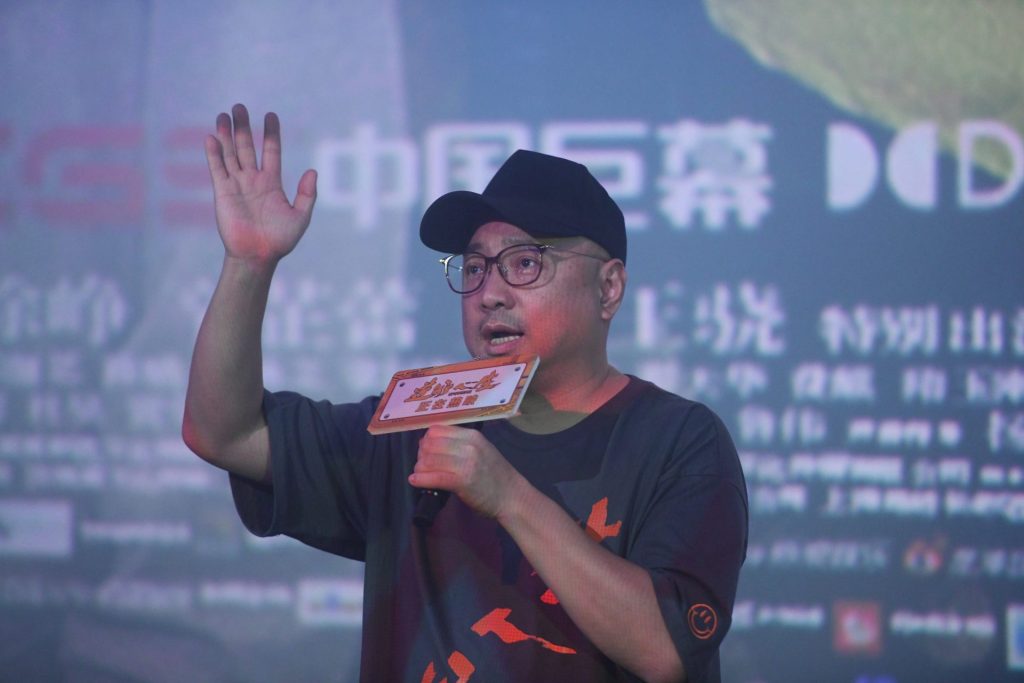
“Upstream” (逆行人生) is the movie of the summer in China. Directed by Xu Zheng, one of the country’s best-known directors and actors, the film sheds light on the lives of food delivery workers and highlights China’s pressing economic problems. The film has been causing a stir on social media for weeks.
Xu Zheng, born in Shanghai in 1972 and trained at the renowned Shanghai Theatre Academy, first gained recognition for his comedy films. With films such as “Lost in Thailand” (人再囧途之泰囧) about three quirky characters traveling to the country, he became one of the leading directors of this genre in the country. The film was released in cinemas in 2012 and was the biggest box office hit in China to date.
But Xu Zheng has refined his craft and proven that he can also handle very serious and socially critical topics. One example of this is his feature film “Dying to Survive” (我不是药神), about a man desperately trying to get affordable medication for his leukemia. The comedy-drama not only moved audiences in 2018 but also sparked a broad social discussion about the high cost of medication, ultimately leading to political measures to lower prices.
With “Upstream,” Xu seems to have produced another box office hit. The story follows Gao Zhilei, a programmer who loses his job due to the high cost of living in China’s cities and is forced to work as a food delivery boy. It reflects the challenges many people face.
His film hits a nerve because it encapsulates almost all of China’s current economic woes in Gao’s fate. In his mid-40s, he is considered too old to find a new job. He also has to pay off a mortgage on an apartment that lost much of its value during the real estate crash. His father’s medical bills also weigh heavily on him.
Xu Zheng delivers a precise observation of Chinese society. He depicts the grueling working conditions of gig workers, whose numbers have risen sharply in recent years. Most of these workers have no permanent employment and must comply with the strict algorithms of delivery services such as Meituan and Ele.me. In the film, Gao has to work 14-hour shifts and take dangerous risks in traffic to earn a more or less acceptable income.
The drama sparked a wave of reactions on social networks such as Weibo. Many viewers were deeply moved by the portrayal of the reality of life, which seemed all too familiar. However, some viewers criticized what they saw as an overly optimistic ending. Xu probably wanted to provide a glimmer of hope here by leading Gao out of his financial problems through hard work and by developing a navigation app. In this way, Xu remains true to his line: He holds a mirror up to society without altogether abandoning hope for a better future. Joern Petring
Marvin Freericks has been Business Development Manager China at Heyworld GmbH since August. The logistics start-up is owned by Lufthansa Cargo. Freericks studied at Tsinghua University School of Economics and Management and was a trainee at Lufthansa before joining Heyworld.
Julia Zhu Jianghui has been appointed Head of Digital Data & IT at Novo Nordisk’s Beijing Research Center. The Danish pharmaceutical company produces the diabetes drug Ozempic, which has become known as the “slimming injection.” She has worked for the company for 14 years and now moved from Copenhagen to Beijing.
Is something changing in your organization? Let us know at heads@table.media!
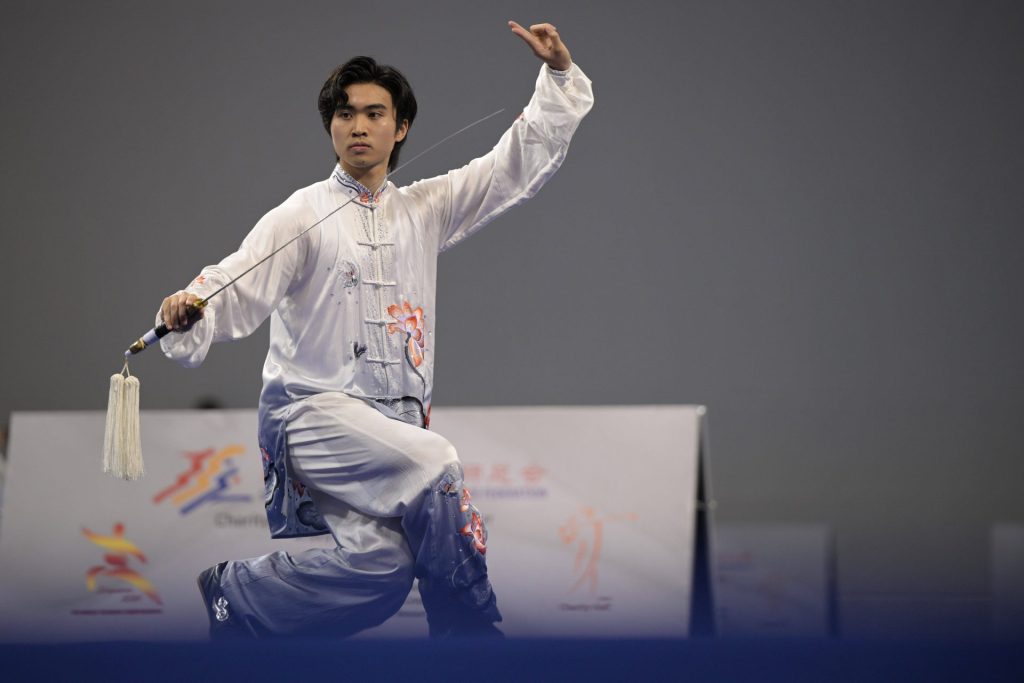
Taijiquan (太极拳) is an ancient Chinese martial art known for its slow, flowing movements – and an integral part of traditional Chinese medicine. Many people practice taiji more for inner contemplation and meditation than for fighting an imaginary opponent. However, “shadow-boxing,” as Taiji was often translated in the past, also exists as a competition to perfect the movements: At the 4th Taijiquan World Championships in Singapore, men and women compete for medals in various categories, just like at the Olympics. The picture shows Leung Yat Sing from Hong Kong performing his routine in the “42 movements” category.
Governmental coddling and support are not necessarily an advantage. China’s state-owned companies are falling behind modern, private competitors such as BYD and Xpeng when it comes to electromobility. One of the reasons: They may have benefited from the forced knowledge transfer of joint ventures with Western brands in the decades from 1980 to 2020 – but this knowledge is now losing value as new drive systems are emerging.
Chinese state-owned companies such as FAW and Changan are not flexible enough to bring their technology and business model up to speed, as Christian Domke Seidel analyzes. However, from a German perspective, it is somewhat disconcerting that Chinese state-owned companies have the same problems with the transformation and competition from BYD as German car manufacturers.
Meanwhile, Canada wants to keep good and affordable EVs from top brands such as BYD out of its market as much as possible; the reasoning is once again cheap export of excess capacity. By introducing high tariffs, Ottawa follows other major markets, such as the USA and the EU.
One can’t help but wonder: Where else should the Chinese goods go? Again, fast, agile brands such as BYD and Xpeng have a solution to the trade problems: They quickly build plants in Europe to circumvent tariffs by producing locally.


China’s major state-owned automotive companies – Changan Automobile, FAW Group and Dongfeng Motor – have lost touch with electromobility. This is mainly due to their lack of investment opportunities and risk aversion. New government assessment criteria are intended to help these companies raise the necessary money for research and development. However, the impact on the already oversaturated market is entirely unclear.

Just under one in three cars (31.6 percent) sold in China in 2023 was an electric car, plug-in hybrid or other New Energy Vehicle (NEV). And the trend is rising: By July 2024, it was already half. However, the three large state-owned companies are nowhere near this.
However, Dongfeng only appears to be doing well here: The comparatively high share is also because the car manufacturer’s total sales slumped by 17 percent last year.
According to experts, state-owned companies face the same obstacles as European, Japanese, and American car manufacturers. “The established state-owned companies have been producing combustion cars for decades,” says Jacob Gunter, Senior Analyst at the Mercator Institute for China Studies (Merics). Switching to electric vehicles means changing their business model, and this requires a company to invest heavily and take many risks.”
In other words, many Chinese state-owned companies have the same problems with the transition as German car manufacturers. A handful of highly dynamic domestic avant-gardists, such as BYD, tend to be the ones who are currently shaping the super-advanced image of the Chinese car industry. State-owned companies are not faring any better than the Germans.
This is because Chinese state-owned companies cannot invest anywhere near the same extent as private companies. This is because the State-Owned Assets Supervision and Administration Commission (SASAC), which is responsible for central state-owned enterprises, evaluates their investments, assesses the risks and sets the spending limits. SASAC has now expanded the criteria for this.
“The adjustments to the evaluation are aimed at removing the obstacles,” Zhang Yuzhuo, Chairman of SASAC, told Caixin Global. The new criteria are to enable state-owned companies to focus more on market share and the development of new technologies and less on sales and margins. However, the details are still lacking.
However, there are more reasons why state-owned companies do not play the leading role in electromobility. The former joint venture obligation for foreign manufacturers in China has allowed domestic companies to siphon off knowledge – but not in the electric segment. The progress Chinese manufacturers have made through these partnerships has tended to be of a short and medium-term nature. Foreign car brands have also focused on combustion engines for a very long time.
According to Gunter, China’s state-owned companies have also been given entirely different goals besides car manufacturing. “The large state-owned companies are in the Danwei system. This means that they also have to serve social and political goals. First and foremost, they must guarantee employment, pay good salaries, provide housing and healthcare.” This also slows down the companies and leaves less money for research and development.
The Communist Party requires that one of the three centralized state-owned companies Changan, FAW and Dongfeng sell at least one million NEVs by 2025. This prompted Dongfeng to launch a price offensive just days after the new regulations were enacted. Firstly, customers can trade in their used car for an NEV at a substantial discount. Secondly, current car models are being offered at high discounts. Changan focuses on its three NEV brands Avatr, Deepal and Nevon in order to reach the million target and has also partnered with Huawei. The equally huge state-owned company and VW partner Shanghai Automotive (SAIC) is not part of the aforementioned group, as SAIC is under the control of the Shanghai local government and not SASAC.
In any case, the consequences of these investments made by the three companies are not yet foreseeable. The market has been consolidating for years. Hundreds of EV companies have been reduced to dozens through bankruptcies and takeovers. However, the Chinese car market continues to be dominated by overcapacity and price wars. There are still many state-owned car manufacturers, as Gunter says. Many local governments have founded their own brands and subsidized them massively to maintain quality jobs. Anyone traveling through China can see how police and taxi car brands change from region to region. Many of them are unknown outside the respective government zone.
Local governments hope to be able to subsidize their car brand until the market is less competitive. However, there is reason to doubt that the Communist Party tolerates this practice much longer. Gunter’s assessment: “Beijing has not yet decided how to react to the overcapacity and the large number of manufacturers because the issue is not yet a priority. But they will have to solve the dilemma.”
Gunter emphasizes that state-owned companies always have the advantage when switching to electromobility. “It is easier for them to switch to electric cars because the government can simply mandate this strategy, permitting lower margins or losses.”
Private Chinese car manufacturers already work with tiny margins. Gunter calculates that market leader BYD earns between 1,000 and 1,500 euros on each vehicle. Despite the shipping costs, this figure is seven to ten times higher in Europe, and the effects of the EU’s extra tariffs have not yet been factored in. Nevertheless, Gunter is convinced: “If the price pressure from state-owned companies increases, private companies will increasingly go abroad because the margins are better there.” BYD and others also want to produce overseas, and SAIC has also set its sights on Europe.

After the United States, Canada has now doubled the import prices of Chinese EVs. Prime Minister Justin Trudeau justified the move on the grounds that China was deliberately exporting cheap products from overcapacity in the country’s factories. The step is part of a global trend to keep Chinese imports out. This, in turn, forces Chinese companies to relocate investments from their domestic market to the target markets.
As expected, the Chinese government reacted angrily on Wednesday and threatened consequences. The embassy in Ottawa called the move “protectionist,” adding that it violated World Trade Organisation (WTO) rules and undermined trade cooperation between the two countries.
The decision was triggered at a cabinet meeting, which US security adviser Jake Sullivan reportedly also attended: The import of Chinese EVs to Canada has increased almost fivefold within a year. However, most of the attention initially fell on Tesla. After all, the tariffs also affect cars from the US brand that are manufactured in Shanghai and thus run counter to company founder Elon Musk’s strategy of manufacturing cars at a large local plant at a Chinese cost and selling them worldwide.
A Canadian government spokesperson openly told the news agency Reuters that Tesla should supply the Canadian market from North America – in other words, from the USA. This would mean no tariffs. The goal is clear: Sales should serve the regional labor market; Canada doesn’t want to become the bargain bin for the enormous capacities of the Chinese economy.
China’s trade surplus rose to a record high of 99 billion US dollars in June, making all other economies nervous at the moment. After all, one person’s surplus is another’s deficit. China’s export success can be attributed to low prices thanks to high subsidies.
With 1.6 million cars sold in 2023, Canada is a significant car market. However, it is significantly smaller than, for example, the German market with 2.8 million vehicles sold. More importantly, the Canadian move is part of a global trend. As is well known, the EU is also imposing tariffs on Chinese EVs from October, and many other economies are closing their doors. Not just for cars: Indonesia slaps tariffs of up to 200 percent on textiles from China, and Malaysia cracks down on direct imports through shopping platforms.
Compared to the flat-rate tariffs of 100 percent imposed by the USA and Canada, the EU tariffs have a differentiated effect. They range between 17 and 36.3 percent and were calculated according to an analysis of the subsidies granted to individual manufacturers. This makes the EU’s tariffs much less political than the North American ones. Nevertheless, China also accuses Brussels of arbitrariness. The state media accuse the EU of blindly following the USA into a trade conflict.
Despite Chinese opposition, the tariffs are already having an effect. And they are heading right where the EU wants them to. As Xpeng CEO He Xiaopeng told Bloomberg, the EV manufacturer is considering building a plant and data centers in Europe.
Other Chinese brands are pursuing similar plans. BYD is building a factory in Hungary, Geely is moving to Slovakia and Chery is already producing in Spain. China’s investments in factories in the European economic area are thus growing substantially.
Local production helps avoid import duties, which is why Toyota started to set up plants in the USA and Europe in the early 1980s. As Japanese companies established themselves as domestic manufacturers, they no longer faced any reservations. Today, they are considered good employers.
Turkey successfully pulled off a different maneuver: Ankara first announced high tariffs on Chinese electric cars but withdrew the plan after BYD announced a large investment in the country.


Sinolytics is a research-based business consultancy entirely focused on China. It advises European companies on their strategic orientation and specific business activities in the People’s Republic.
Chinese Foreign Minister Wang Yi and US National Security Advisor Jake Sullivan met behind closed doors on Tuesday, according to a report by Chinese state broadcaster CCTV. The aim of the meeting was to maintain a “channel of strategic communication” in order to stabilize relations in the face of growing tensions between the two countries, CCTV further reported.
Before the meeting near Beijing, Wang described bilateral relations as important to the world and said they had undergone “twists and turns.” The two sides will hold in-depth talks in the coming days to “overcome disruptions and remove obstacles” to the sustainable development of bilateral relations.
Sullivan, who is on a three-day visit to China, was quoted as saying that US President Joe Biden is committed to managing relations with China responsibly, preventing competition from turning into conflict and cooperating in areas of mutual interest. In addition to sounding out a possible last summit between Biden and Chinese President Xi Jinping, the meeting is expected to discuss previous agreements between the two sides, such as on military communications, cooperation in the fight against drugs and dialogue on artificial intelligence. cyb
China would like to see broader support worldwide for its Ukraine peace plan. As reported by AP news agency, China’s special envoy to Ukraine, Li Hui, emphasized after talks with Indonesia, Brazil, and South Africa that they were all important forces in promoting world peace. He said they had maintained communication with both Ukraine and Russia and were committed to a political solution to the conflict through dialogue and negotiations.
China also sees itself in this camp. In February 2023, Beijing presented a twelve-point plan which, among other things, calls for a political resolution to the “Ukraine crisis” and the preservation of the legitimate security interests of all states. The plan makes no mention of military aggression by Russia and was rejected by the West. According to the AP report, Li, in turn, criticized Western support for Ukraine: “All sides are worried that the West continues to relax conditions for Ukraine to strike the Russian territory with aided weapons,” he said, referring to the current Ukrainian offensive in the Russian region of Kursk. “And recent developments on the battlefield confirmed these kind of worries.”
The USA and NATO, on the other hand, described China as Russia’s accomplice in the Ukraine war due to the country’s close ties to Moscow. Conversely, countries in the Global South tend to agree with Beijing. In May, Brazil and China jointly presented a six-point peace plan that calls on “all relevant parties” to de-escalate and refrain from criticizing Russia’s invasion. Among other things, the six points are aimed at preventing the use of weapons of mass destruction, an expansion of the battlefield, attacks on nuclear facilities and the division of the world into blocs.
On Tuesday, Ukrainian President Volodymyr Zelenskiy said that war with Russia would ultimately be resolved through dialogue, but that Kyiv needed to be in a strong position. He announced he would present a plan to US President Joe Biden and his two possible successors. ck/rtr
China has reached its renewables expansion target almost six years ahead of schedule. According to Bloomberg, citing the National Energy Administration, the country installed 25 gigawatts (GW) of wind and solar energy in July, bringing China’s total renewable energy capacity to 1,206 gigawatts. In late 2020, President Xi Jinping announced the goal of generating at least 1,200 gigawatts from clean energy sources by 2030.
Due to the record installation of wind and solar power plants in 2023, China’s electricity generation from renewables increased by 25 percent in the first quarter of 2024 year-on-year. In contrast, the consumption of coal-fired electricity has fallen. Nevertheless, according to Bloomberg, solar and wind energy have only generated around 14 percent of the electricity consumed so far this year. This means that the utilization rate must increase significantly. China is working on a new climate plan (Nationally Determined Contributions), which it must submit to the United Nations by February 2025. However, experts believe that this will not be enough to bring the country onto the 1.5-degree path.
Moreover, experts consider Xi’s renewables expansion target of 1,200 gigawatts to be too low to achieve the target of supplying a quarter of the energy mix (not electricity generation) from non-fossil sources by 2030. For example, Lauri Myllyvirta from the Centre for Research on Energy and Clean Air (CREA) on X believes that China is “badly behind on the much more important carbon intensity target.” He said that significantly more solar and wind power would be needed, as hydropower and nuclear power could not be significantly expanded beyond existing plans by 2030. Myllyvirta also praised “the impressive acceleration in solar power deployment in 2023.”
Meanwhile, the People’s Bank and seven ministries issued new guidelines on Tuesday that provide companies in the Yangtze region with new incentives to raise more capital through green bonds and shares. According to the South China Morning Post, this is intended to accelerate the transformation of the region’s economy. Details are not yet known. The Yangtze River Economic Belt comprises eleven provinces, including the autonomous cities of Shanghai and Chongqing, representing 44 percent of China’s economic output. ck
The Chinese leadership has recognized the Catholic Bishop of Tianjin, Melchior Shi Hongzhen, the Vatican announced on Tuesday. The bishop had previously been placed under house arrest for refusing to join China’s state-supported church structure. “This measure is a positive fruit of the dialogue established over the years between the Holy See and the Chinese Government,” the Vatican wrote in its statement.
Shi, who has been Bishop of Tianjin in northern China since 2019, had refused to join the state church. He was ordained a Catholic bishop in 1982 and is now 95 years old. In 2018, the Vatican signed a provisional agreement with the government in Beijing on the appointment of Catholic bishops in the country, which was renewed in 2022. The agreement gives Chinese officials influence over who Pope Francis appoints as bishops in China. cyb

“Upstream” (逆行人生) is the movie of the summer in China. Directed by Xu Zheng, one of the country’s best-known directors and actors, the film sheds light on the lives of food delivery workers and highlights China’s pressing economic problems. The film has been causing a stir on social media for weeks.
Xu Zheng, born in Shanghai in 1972 and trained at the renowned Shanghai Theatre Academy, first gained recognition for his comedy films. With films such as “Lost in Thailand” (人再囧途之泰囧) about three quirky characters traveling to the country, he became one of the leading directors of this genre in the country. The film was released in cinemas in 2012 and was the biggest box office hit in China to date.
But Xu Zheng has refined his craft and proven that he can also handle very serious and socially critical topics. One example of this is his feature film “Dying to Survive” (我不是药神), about a man desperately trying to get affordable medication for his leukemia. The comedy-drama not only moved audiences in 2018 but also sparked a broad social discussion about the high cost of medication, ultimately leading to political measures to lower prices.
With “Upstream,” Xu seems to have produced another box office hit. The story follows Gao Zhilei, a programmer who loses his job due to the high cost of living in China’s cities and is forced to work as a food delivery boy. It reflects the challenges many people face.
His film hits a nerve because it encapsulates almost all of China’s current economic woes in Gao’s fate. In his mid-40s, he is considered too old to find a new job. He also has to pay off a mortgage on an apartment that lost much of its value during the real estate crash. His father’s medical bills also weigh heavily on him.
Xu Zheng delivers a precise observation of Chinese society. He depicts the grueling working conditions of gig workers, whose numbers have risen sharply in recent years. Most of these workers have no permanent employment and must comply with the strict algorithms of delivery services such as Meituan and Ele.me. In the film, Gao has to work 14-hour shifts and take dangerous risks in traffic to earn a more or less acceptable income.
The drama sparked a wave of reactions on social networks such as Weibo. Many viewers were deeply moved by the portrayal of the reality of life, which seemed all too familiar. However, some viewers criticized what they saw as an overly optimistic ending. Xu probably wanted to provide a glimmer of hope here by leading Gao out of his financial problems through hard work and by developing a navigation app. In this way, Xu remains true to his line: He holds a mirror up to society without altogether abandoning hope for a better future. Joern Petring
Marvin Freericks has been Business Development Manager China at Heyworld GmbH since August. The logistics start-up is owned by Lufthansa Cargo. Freericks studied at Tsinghua University School of Economics and Management and was a trainee at Lufthansa before joining Heyworld.
Julia Zhu Jianghui has been appointed Head of Digital Data & IT at Novo Nordisk’s Beijing Research Center. The Danish pharmaceutical company produces the diabetes drug Ozempic, which has become known as the “slimming injection.” She has worked for the company for 14 years and now moved from Copenhagen to Beijing.
Is something changing in your organization? Let us know at heads@table.media!

Taijiquan (太极拳) is an ancient Chinese martial art known for its slow, flowing movements – and an integral part of traditional Chinese medicine. Many people practice taiji more for inner contemplation and meditation than for fighting an imaginary opponent. However, “shadow-boxing,” as Taiji was often translated in the past, also exists as a competition to perfect the movements: At the 4th Taijiquan World Championships in Singapore, men and women compete for medals in various categories, just like at the Olympics. The picture shows Leung Yat Sing from Hong Kong performing his routine in the “42 movements” category.
